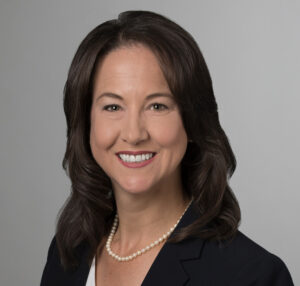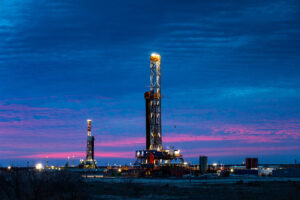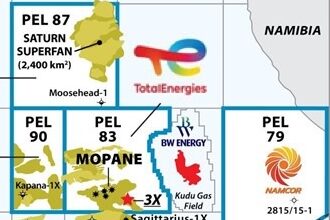Renewed focus on safety needed as industry deals with labor shortage amid activity ramp-up


Pioneer’s Bonnie Black: Inflation and supply chain are also creating challenges, but communication and transparency between operator and contractor can help both parties
By Linda Hsieh, Editor & Publisher
Bonnie Black is VP Drilling at Pioneer Natural Resources.
What do you see as the biggest challenges that the global drilling industry currently faces?
Supply chain and inflation are certainly impacting all operators, but I would say Pioneer is doing a good job of navigating these challenges because of our long-standing partnerships with our contractors and suppliers. These partnerships have allowed us to dampen the effects of inflation, as well as keep our supplies secure.
Pioneer plans to run between 24-26 rigs in 2023, so we’ve also been able to leverage our size and scale, but I strongly believe it’s our deep partnerships that have been critical to our success. As the headwinds come, we’re able to approach them with open communication and honest discussions about the risks and challenges.
Another challenge that may be a bit more specific to the US or the Permian Basin is the labor issue. All industries are seeking labor, not just oil and gas. And we’re all looking for the same people – the ones we can rely on to show up, not just today but the next day and the next hitch.
But unlike other industries, the oil and gas industry is facing a double whammy because we already had a gap in labor dating back to the downturn in 2014 and even further back to the 1980s. Moreover, a lot of our more experienced employees are now looking to retire. All this combined means that we are seeing a lot more short-service employees (SSE’s) on location. These can be individuals new to our industry, to a certain location or to that specific job. It’s not uncommon today to have 30% SSE’s on a drilling location.
This has created challenges in safety, and it’s something that we will have to address as an industry. At Pioneer, one way we’re addressing this is by continuing to shift the way we approach safety. We’ve left the days of incident-based safety culture behind and are moving toward a more risk-based culture. That means we’re focusing less on what happened in the past and much more on what could happen in the future. We are looking more closely at what risks are out there, what we can prevent, and how we can further engineer people out of the line of fire.
What are your views on the industry’s efforts to adopt new technologies, particularly around digital and automation?
I see our industry making a lot of strides with drilling automation and integrating those technologies with big data to drive increased efficiency. This is really helping to support our field personnel, especially the new workers.
Of course, technology brings its own challenges. Rolling out a new technology across a rig fleet is never straightforward. On Pioneer’s rigs, we’ve adopted a lot of diversity to help with these efforts. I’m not talking about gender or ethnic diversity but rather diversity in experience, education and job responsibilities. You’ll find that our two wellsite supervisors on each rig – day and night – are going to be very different from each other. One will be a seasoned supervisor who has great instincts about what’s going to happen on that well. The other will be a lot younger, and he or she might be a degreed engineer who is very well versed in cutting-edge technology. This gives us the best of both worlds, combining experience and an eagerness for technology adoption.
Then, on top of that, we give them support through a remote command center. They don’t oversee or direct the rigs – they support them. These centers are staffed with even more diversity, including a seasoned superintendent as well as teams of engineers, operational geologists, directional drillers and data scientists.

Can you talk a bit more about how Pioneer is using digital technologies to improve your drilling operations?
We are very much focused on using digital technologies to make what we call data-driven decisions. We have built live algorithms that leverage real-time data from our wells to give alerts to our personnel. These can be alerts for potential stuck pipe or hole-cleaning issues, for example. We’ve also built physics-based models that show us things like offset parameters and torque and drag analyses – all designed to help us make real-time decisions while drilling. Over time, we believe efforts like these can help us to take our lower-performing rigs and match their performance to our best-performing ones.
Are you looking at technologies that could help Pioneer achieve completely autonomous drilling?
Automation is a journey. In the near term, we’re focused more on improving efficiency and safety rather than autonomous drilling. There are many, many technologies out there; you can’t adopt all of them all at the same time. We have to figure out which ones are a right fit for our operation and which ones will really make a difference in efficiency. It doesn’t mean that we won’t adopt more of them later, but you have to have a priority.
With that said, I believe we have built a strong foundation, particularly on the people side with our subject matter experts. Like I mentioned with our command centers, we’re putting together very diverse teams so they can play off of one another’s expertise and technological backgrounds to improve efficiencies. I think that’s what is making drilling exciting again, and we’ve not yet seen the limits of what we can do.
Going back to what you said earlier about having deep, long-standing relationships with your contractors and suppliers – can you talk about Pioneer’s approach to building relationships like that?
One of the things that we are very proud of is that we approach those vendor relationships as true partnerships. We are as transparent as possible with our plans so that they can also plan their work. We recognize that, in order for them to help us deliver on our projects, they have to know what we need from them and when, with some surety.
Communication and transparency are paramount, and that involves having conversations early and often. If there is potential for our plans to change, we communicate that with them. At the same time, if our vendors are having challenges around supply chain or labor, there is enough trust in our relationship that they can tell us upfront, and we can try to solve those issues together as early as possible.
There seems to be a bigger focus on energy security now than we’ve seen in perhaps decades. Do you see this as a potential turning point for the oil and gas industry? What can we do to turn this into an opportunity to renew our image among either investors or next-generation talent?
Without a doubt, there’s been a huge focus on energy security. People are talking a lot more about the energy supply and demand dynamic and whether this is completely a product of the Russia/Ukraine war. I think that’s been good for our society because it has brought energy security to the forefront. We’ve had limited investment in the oil and gas space for several years, so we definitely have something to prove to our investors.
I believe we have to continue to show that we are strong investments that focus on returning free cash flow and a strong return of capital. That is certainly a key focus for us at Pioneer.
While we’re seeing a recovery in the onshore drilling market, it seems unlikely that many new rigs will be built soon. So what upgrades to existing rigs and equipment would you like to see in the next few years?
Most of the rigs that we’re running today were built during the boom we saw in the early 2010s. With the pace of today’s drilling operations, we’re definitely pushing their limits to drill faster and farther. As we continue to require more from those rigs in the coming years, we will likely need things like higher torque on top drives, better iron roughnecks, higher racking capacity and probably bigger mud pumps.
Pioneer is also very focused on generator management as part of our carbon reduction efforts and ESG in general. Technologies that can help us to run generators efficiently and minimize diesel usage will be beneficial. Ultimately, we may also see the industry gravitate toward electrifying rigs and running on highline power. I think there’s a lot of opportunity for both operators and service companies to continue exploring in this space.
What are your views on the difficulties that our industry faces in attracting next-generation workers?
I’m the mom of two college-aged boys, and one of them recently went to a career fair where he said every single company there had a long line of students waiting to talk to them, yet there was no one at the oil and gas table. I think that is very illustrative of the challenge we’re facing. The next generation has been persuaded by society that our industry is bad, and that’s hugely problematic for us.
I don’t have the solution, but I do believe that it is the obligation of everyone who is part of this great industry to help attract the next generation. This means that we have to tell our story and show people how much good we do for people and the planet.
For the young people we do attract into our industry, we also need to make sure they understand the role they’re playing in energy security. Compared with previous generations, I think young workers today place a much heavier emphasis on having a sense of purpose. They’re looking for meaning in their work, and they want to be proud of what they do. That means our industry has to make sure we’re creating an atmosphere where our purpose is not only understood but also appreciated at all levels of the workforce. DC




